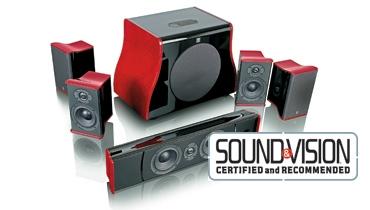Boston Acoustics VS Series home theater speaker system

The firm, located 25 miles north of its namesake city, has undergone changes of product direction as well as corporate structure and ownership. But Boston Acoustics' latest home-speaker line, the VS Series, hearkens right back to its roots: wood-finished, two- and three-way speakers that emphasize musical performance and value in equal measure. The new line has floor, bookshelf, and center models and a single subwoofer. Aiming for affordability, we went with a quartet of the smallest bookshelf model, the VS240, plus the VS224 (billed as an LCR design) for the center speaker and a VPS210 sub.
All of the VS models have a tuck-waisted profile that looks a bit mannered in pictures, but I found it perfectly stunning in the flesh. (Part of the credit surely goes to the VS's sumptuous gloss-black and cherry-veneer surfaces.) The VS240 and 224 share fresh Boston driver engineering, including a new-tech 41?2-inch woofer, and a 1-inch tweeter with an unusual anchored center said to promote low distortion and permit response to 30 kHz.
SETUP
The VS240 and VS224 demanded nothing more than hooking up my speaker cables, and since all of my cables have banana plugs and the Boston speakers offer high-grade multiway binding posts all around, this took mere moments. Neither the VS240 nor the VS224 includes dual terminals for biwiring, which seems rational enough to me - I never really got the whole biwiring thing, unless you're running 100 feet of 18-gauge wire.
The connections on the VPS210 subwoofer are atypically placed on the bottom, with the controls on top. This makes for a tidy installation but also requires tipping the sub onto one of its end panels to do the hookup. (I put down a pad to avoid damaging that lovely cherry.)
The good news about this arrangement is that the controls are always easily available to the user. The bad news is that they are equally available to everyone else, including toddlers, cats, and bass-hungry teenagers. Boston supplies a snap-in plastic cover, but it only conceals the crossover and phase controls, not the big, inviting subwoofer-level knob.




























































